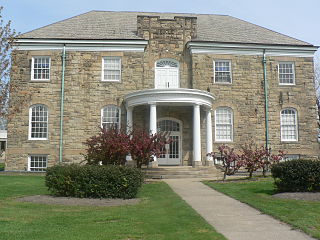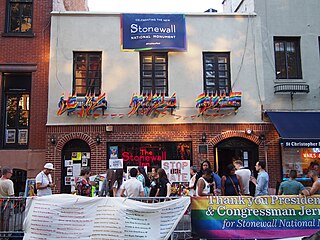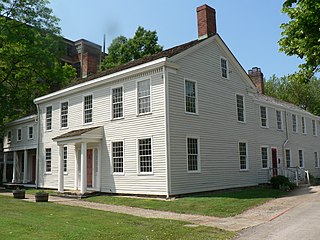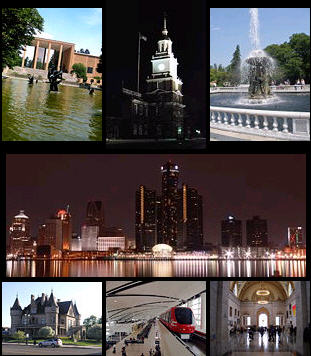
Euclid is a city in Cuyahoga County, Ohio, United States. Located on the southern shore of Lake Erie, it is an inner ring suburb of Cleveland. The population was 49,692 at the 2020 census, making it the fourth largest city in Cuyahoga County.

South Euclid is a city in Cuyahoga County, Ohio, United States. It is an inner-ring suburb of Cleveland located on the city's east side. As of the 2020 census, the population was 21,883.

The Cleveland metropolitan area, or Greater Cleveland as it is more commonly known, is the metropolitan area surrounding the city of Cleveland in Northeast Ohio, United States. According to the 2020 census results, the six-county Cleveland, OH Metropolitan Statistical Area (MSA) consists of Cuyahoga County, Ashtabula County, Geauga County, Lake County, Lorain County, and Medina County, and has a population of 2,185,825, making it the 33rd-most populous metropolitan area in the United States and the third largest metropolitan area in Ohio. The metro area is also part of the larger Cleveland–Akron–Canton Combined Statistical Area with a population of over 3.7 million people, the most populous statistical area in Ohio and the 17th most populous in the United States.

LGBTQ tourism is a form of tourism marketed to gay, lesbian, bisexual, transgender and queer (LGBTQ) people. People might be open about their sexual orientation and gender identity at times, but less so in areas known for violence against LGBTQ people.

Cuyahoga Community College (Tri-C) is a public community college in Cuyahoga County, Ohio. Founded in 1963, it is the oldest and largest public community college within the state. Not until 1961 had Ohio permitted the establishment of community colleges and Ohio was then one of only four U.S. states without them.

Cleveland Metroparks is an extensive system of nature preserves in Greater Cleveland, Ohio. Eighteen reservations, which largely encircle the city of Cleveland, follow along the shore of Lake Erie and the rivers and creeks that flow through the region. Referred to unofficially as the 'Emerald Necklace', the network of parks spans over 25,000 acres (10,000 ha) and includes over 300 miles (480 km) of walking, bicycle, and horse trails as well as numerous picnic areas, nature education centers, golf courses, and countless fishing spots. In addition, the district includes the zoo in Cleveland. Four of the reservations are adjacent to Cuyahoga Valley National Park.

Greater Pittsburgh is the metropolitan area surrounding the city of Pittsburgh in Western Pennsylvania, United States. The region includes Allegheny County, Pittsburgh's urban core county and economic hub, and seven adjacent Pennsylvania counties: Armstrong, Beaver, Butler, Fayette, Lawrence, Washington, and Westmoreland in Western Pennsylvania, which constitutes the Pittsburgh, PA Metropolitan Statistical Area MSA as defined by the U.S. Office of Management and Budget.

The Dunham Tavern, also known as the Dunham Tavern Museum, is the oldest building in Cleveland, Ohio, located at 6709 Euclid Avenue. Rufus and Jane Pratt Dunham built their first home on the site in 1824, and the existing taproom was built in 1842. It is believed to be the first building constructed on Euclid Avenue east of East 55th Street and the first frame house on the street. It later became a stagecoach stop and tavern.

Tourism in metropolitan Detroit, Michigan is a significant factor for the region's culture and for its economy, comprising nine percent of the area's two million jobs. About 19 million people visit Metro Detroit spending an estimated 6 billion in 2019. In 2009, this number was about 15.9 million people, spending an estimated $4.8 billion. Detroit is one of the largest American cities and metropolitan regions to offer casino resort hotels. Leading multi-day events throughout Metro Detroit draw crowds of hundreds of thousands to over three million people. More than fifteen million people cross the highly traveled nexus of the Ambassador Bridge and the Detroit-Windsor Tunnel annually. Detroit is at the center of an emerging Great Lakes Megalopolis. An estimated 46 million people live within a 300-mile (480 km) radius of Metro Detroit.
A destination marketing organization (DMO) is an organisation which promotes a location as an attractive travel destination. DMOs are known as tourist boards, tourism authorities or "Convention and Visitors Bureaus". They primarily exist to provide information to leisure travelers. Additionally, where a suitable infrastructure exists, they encourage event organizers to choose their location for meetings, incentives, conferences, and exhibitions, collectively abbreviated as MICE.
Destinations International is a professional organization representing destination organizations and convention and visitor bureaus worldwide.

This is a list of the National Register of Historic Places listings in Cleveland, Ohio.

The HealthLine is a bus rapid transit (BRT) line run by the Greater Cleveland Regional Transit Authority in Cleveland and East Cleveland, Ohio, United States. The line runs along Euclid Avenue from Public Square in downtown Cleveland to the Louis Stokes Station at Windermere in East Cleveland. It began operation on October 24, 2008. Its current name was the result of a naming rights deal with the Cleveland Clinic and University Hospitals of Cleveland. The HealthLine is denoted with a silver color and abbreviated simply as HL on most RTA publications.

John Eisenmann was an architect in Cleveland, Ohio. As part of Eisenmann & Smith he designed the Cleveland Arcade in downtown Cleveland. He also designed the Main building for Case School of Applied Science, present-day Case Western Reserve University, where he was also the school's first professor of civil engineering. He pioneered structural steel construction in the United States and is credited with co-designing Cleveland's Arcade, "the first commercial building in the state designated an historic landmark in architecture." Eisenmann is also credited with designing the flag of Ohio in 1901.

Columbus, Ohio has a generally strong and diverse economy based on education, insurance, banking, fashion, defense, aviation, food, logistics, steel, energy, medical research, health care, hospitality, retail, and technology.

The American Bus Association (ABA) serves as a trade association for motorcoach operators and tour companies operating in the United States and Canada. With its headquarters situated in Washington, D.C., the association has a membership comprising approximately 1,000 companies engaged in bus operations or bus-based tours, alongside around 2,800 organizations representing the broader travel and tourism industry. Additionally, several hundred suppliers of buses and related products and services are affiliated with the ABA.

The Greater Cleveland Aquarium is an aquarium in Cleveland, Ohio. Occupying the historic FirstEnergy Powerhouse building located on the west bank of the Cuyahoga River in the city's Flats district, the aquarium, which opened in January 2012, consists of approximately 70,000 square feet (6,500 m2) of exhibition space and features 55 exhibits over 9 thematic concentrations representing both local and exotic species of fish. The facility is the only independent, free-standing aquarium in the state of Ohio and ended a 26-year period that the city lacked a public aquarium.

The Thailand Convention and Exhibition Bureau (TCEB) is a public organization established by royal decree in 2002 to promote Thailand as a destination for meetings, incentives, conferencing, exhibitions (MICE).

The Jewish community of the Greater Cleveland area comprises a significant ethnoreligious population of the U.S. State of Ohio. Jews from Bavaria immigrated in the 1830s and its size has significantly grown in the decades since then. In the early 21st century, Ohio's census data reported over 150,000 Jews, with the Cleveland area being home to more than 50% of this population. As of 2018, Greater Cleveland is the 23rd largest Jewish community in the United States. As of 2023, the Cleveland Jewish Community is estimated to be about 100,000 people.

















